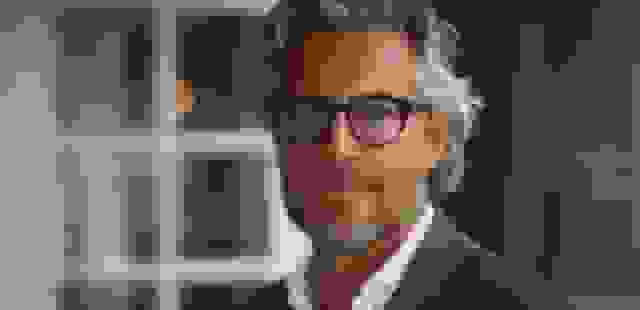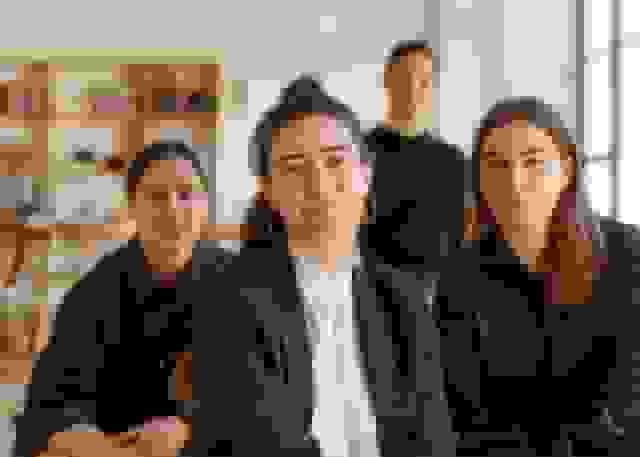AI Corporate Headshots - Case Study | Mid Size Business

AI Corporate Headshots Case Study: Mid-Size Company
Client:A , a mid-size technology company with 160+ employees, embarked on an innovative journey to revolutionize its corporate imaging strategy. This case study delves into Client:A's implementation of AI-generated corporate headshots, a move aimed at streamlining the process of obtaining and updating employee photos while maintaining a consistent corporate image.

The project, spanning from January to August 2024, faced its share of challenges, including initial employee resistance, technical hurdles, and data privacy concerns. However, through strategic planning, effective communication, and technological expertise, Client:A successfully navigated these obstacles. The result was a significant transformation in their HR processes, leading to substantial time and cost savings, improved efficiency, and a more cohesive visual representation of their workforce.
This case study offers valuable insights into the complexities of implementing AI solutions in a corporate environment, highlighting the importance of balancing technological advancement with employee concerns and corporate needs.
Introduction
Company Background
Client:A stands at the forefront of cloud-based software solutions, carving a niche in the competitive technology sector. With a workforce of 160+ employees distributed across three office locations, the company has experienced rapid growth in recent years. This expansion, while a testament to their success, brought with it the challenges of managing a growing, diverse workforce.
The Need for Corporate Headshots
As Client:A's team expanded, the company faced increasing difficulties in maintaining up-to-date and consistent employee headshots. These images were crucial for various purposes:
- Internal systems and employee directories
- Client presentations and proposals
- Marketing materials and company website
- Social media and professional networking platforms
The traditional approach of scheduling periodic photography sessions became logistically challenging and costly. It also resulted in inconsistencies as employees joined or changed roles between sessions.
Introduction to AI-Generated Headshots
In their search for a solution, Client:A's leadership team discovered the emerging technology of AI-generated headshots. This innovative approach promised to address several key issues:
- Consistency: Ensuring a uniform style and quality across all employee images
- Timeliness: Allowing for immediate creation and updates of headshots
- Cost-effectiveness: Reducing the need for professional photography sessions
- Flexibility: Enabling easy updates as employees change roles or appearances
The potential of this technology to streamline processes and enhance the company's professional image led Client:A to explore its implementation.
Project Overview

Goals and Objectives
Client:A set clear goals for the AI headshot implementation project:
- Seamlessly integrate an AI headshot system with existing HR software
- Significantly reduce time and costs associated with traditional photography
- Ensure a consistent and professional visual representation of all employees
- Improve the efficiency of updating and managing employee photos
- Enhance the overall professional appearance of company materials
Timeline
The project was structured over an eight-month period:
- January 2024: Project Initiation
- February 2024: Research and Vendor Selection
- March-April 2024: Implementation and Testing
- May 2024: Company-wide Rollout
- August 2024: Post-implementation Review
This timeline allowed for thorough research, careful implementation, and a comprehensive review of the project's success.
Stakeholders
The project involved various departments and individuals:
- HR Department: Led the project, managing implementation and employee communication
- IT Department: Handled technical integration and security measures
- Marketing Team: Provided input on image quality and brand consistency
- Employee Representatives: Voiced concerns and feedback from the workforce
- Executive Leadership: Oversaw the project and made key decisions
Implementation Process
Selection of AI Headshot Technology
After evaluating several vendors, Client:A chose BetterPic, a cloud-based AI headshot solution. BetterPic stood out for its:
- High-quality image output
- User-friendly interface
- Robust API for seamless integration
- Strong data security measures
- Positive reviews from other corporate clients
Integration with Existing HR Systems
The IT department worked closely with BetterPic's technical team to ensure smooth integration:
- API Configuration: Establishing secure connections between BetterPic and Client:A's HR management system
- Data Mapping: Aligning employee data fields for accurate image assignment
- Access Control: Setting up role-based access to maintain data privacy
- Testing: Rigorous testing to ensure data integrity and system performance
Employee Onboarding and Training

The HR department developed a comprehensive onboarding process:
- Informational Sessions: Company-wide presentations introducing the new technology
- Instructional Videos: Step-by-step guides on using the BetterPic platform
- Live Webinars: Interactive sessions allowing employees to ask questions
- One-on-One Support: Personalized assistance for employees with specific concerns
Challenges Faced
Technical Challenges
The implementation team encountered several technical hurdles:
- Initial compatibility issues between BetterPic's API and Client:A's HR software
- Inconsistent image quality when employees used various devices for photo uploads
- System slowdowns during peak usage times, particularly during the initial rollout
- Difficulties in handling legacy data and images
Employee Resistance
A portion of the workforce expressed concerns:
- Privacy Issues: Worries about the use and storage of personal images
- Authenticity Concerns: Skepticism about the "realness" of AI-generated photos
- Personal Preference: Some employees, particularly long-term staff, preferred traditional photography
- Technical Comfort: Varying levels of comfort with new technology among employees
Data Privacy Concerns
Ensuring compliance with data protection regulations was paramount:
- GDPR and Local Regulations: Ensuring all processes met stringent data protection standards
- Data Ownership: Clarifying who owns the generated images and how they can be used
- Data Storage: Addressing concerns about where and how long images would be stored
- Consent Management: Developing a system for employees to give and revoke consent for image use
Solutions and Strategies

Addressing Technical Issues
The IT team worked diligently to resolve technical challenges:
- Collaboration with BetterPic: Regular meetings to address integration issues and optimize performance
- Quality Assurance: Implementing an AI-driven quality check to ensure consistent image output
- Infrastructure Upgrade: Enhancing server capacity to handle high-volume periods
- Legacy System Integration: Developing custom scripts to smoothly incorporate existing employee data
Employee Engagement and Education
HR led a multi-faceted approach to address employee concerns:
- Transparency Campaign: Clear communication about the technology, its benefits, and data usage
- Hands-on Demonstrations: Allowing employees to experience the AI headshot creation process
- Feedback Mechanism: Establishing an open channel for employees to voice concerns and suggestions
- Gradual Rollout: Implementing the system in phases, starting with volunteer departments
Ensuring Data Security and Privacy
Client:A implemented robust measures to protect employee data:
- End-to-End Encryption: Securing all data transfers between Client:A and BetterPic
- Clear Usage Policies: Developing and communicating detailed policies on image use and storage
- Consent Management System: Implementing a user-friendly platform for employees to manage their consent
- Regular Audits: Conducting periodic security audits to ensure ongoing compliance and protection
Results and Benefits

Improved Efficiency in HR Processes
The new system significantly streamlined HR operations:
- New Employee Onboarding: Reduced time to create profiles by 75%
- Updates and Changes: Enabled real-time updates to employee information and images
- System Integration: Improved synchronization across all company platforms using employee images
Cost Savings
Client:A realized substantial financial benefits:
- 60% reduction in annual costs associated with professional photography
- Elimination of expenses related to periodic company-wide photoshoots
- Reduced administrative hours spent on managing and updating employee photos
Consistency in Corporate Image
The AI headshot system enhanced Client:A's professional appearance:
- Unified Visual Style: Achieved a consistent look across all employee representations
- Brand Alignment: Improved alignment of employee images with company branding guidelines
- Presentation Quality: Enhanced the professional appearance of company materials and client presentations
Employee Feedback
Positive Responses
The majority of employees embraced the new system:
- 70% reported high satisfaction with the convenience of updating their headshots
- Many appreciated the professional quality of the AI-generated images
- Positive feedback on the user-friendly interface of the BetterPic platform
Negative Feedback and Concerns
A minority of employees expressed ongoing reservations:
- 15% maintained concerns about the authenticity of AI-generated images
- Some reported feeling uncomfortable with the idea of an AI representation of themselves
- A small group requested the option to use traditional photographs
Lessons Learned

The implementation process provided valuable insights:
- Early Engagement: The importance of involving employees in the decision-making process from the start
- Flexible Adoption: Offering alternatives (e.g., traditional photos) for strongly opposed employees eased the transition
- Continuous Improvement: The value of ongoing feedback collection and system refinement
- Technical Preparedness: The need for robust testing and scalable infrastructure to handle company-wide adoption
- Privacy First: The critical importance of prioritizing data security and privacy in AI implementations
Future Plans and Recommendations
Based on the success and learnings from this implementation, Client:A is considering several future initiatives:
- Advanced AI Features: Exploring more personalized headshot options, including various professional settings or attire
- Expanded Integration: Investigating integration with project management tools and internal social networks
- AI Ethics Framework: Developing comprehensive guidelines for responsible AI use in corporate imaging
- Employee AI Literacy: Implementing company-wide programs to enhance understanding of AI technologies
- Continuous Evaluation: Regular assessment of the system's effectiveness and exploration of emerging technologies in this space
Conclusion
The implementation of AI-generated corporate headshots at Client:A marks a significant step in the company's digital transformation journey. This case study illustrates how innovative AI solutions can address practical business challenges, improving efficiency and consistency in corporate imaging.
While the project faced initial skepticism and technical hurdles, the strategic approach to implementation – focusing on employee education, data security, and system integration – led to widespread acceptance and tangible benefits. The success of this initiative not only streamlined HR processes and reduced costs but also positioned Client:A as a forward-thinking employer embracing cutting-edge technologies.
As AI continues to evolve and permeate various aspects of corporate operations, Client:A's experience offers valuable lessons for other organizations considering similar implementations. It underscores the importance of balancing technological advancement with employee concerns, data privacy, and corporate culture.
The journey of Client:A in adopting AI-generated headshots is more than just a technological upgrade; it's a testament to the company's commitment to innovation, efficiency, and employee engagement. As they look to the future, Client:A is well-positioned to leverage this experience for further AI-driven enhancements, setting a benchmark in the industry for the strategic adoption of AI technologies in everyday business processes.
Frequently Asked Questions
What is AI-generated corporate headshot technology?
- AI-generated corporate headshot technology uses artificial intelligence algorithms to create professional-looking headshots without the need for traditional photography. It typically involves uploading a few photos of an employee, which the AI then uses to generate a high-quality, consistent headshot suitable for corporate use.
Why did Client:A choose to implement AI-generated headshots?
- They implemented AI-generated headshots to streamline their process of obtaining and updating employee photos, ensure consistency in their corporate image, reduce costs associated with traditional photography sessions, and improve the efficiency of their HR processes.
How long did the implementation process take?
- The entire implementation process, from project initiation to post-implementation review, took approximately 8 months (January 2024 to August 2024).
What were the main challenges faced during implementation?
- The main challenges included technical integration issues, employee resistance due to privacy concerns and skepticism about AI technology, ensuring data privacy compliance, and maintaining consistent image quality across different employee devices.
How did Client:A address employee concerns about AI-generated images?
- They addressed employee concerns through transparent communication, educational sessions about the technology, hands-on demonstrations, establishing a feedback mechanism, and offering alternatives for strongly opposed employees.
What were the key benefits of implementing AI-generated headshots?
- Key benefits included improved efficiency in HR processes, significant cost savings, enhanced consistency in corporate image, and the ability to easily update employee photos across all company platforms.
How did Client:A ensure data privacy and security?
- They implemented end-to-end encryption, developed clear usage policies, created a consent management system for employees, and conducted regular security audits to ensure ongoing compliance and protection of employee data.
What percentage of employees were satisfied with the new system?
- According to the case study, 70% of employees reported high satisfaction with the convenience of the new AI headshot system.
Did Client:A completely replace traditional photography?
- While the AI system became the primary method for creating headshots, They maintained the option for traditional photography for employees who strongly preferred it or had specific concerns about AI-generated images.
What future plans does Client:A have for this technology?
- They have plans to explore advanced AI features for more personalized headshots, investigate integration with other company systems, develop guidelines for responsible AI use in corporate imaging, and implement company-wide programs to enhance understanding of AI technologies.
Save 87%on average on your professional photos.
Whenever, wherever you are.
Get studio-quality, 4K images in a variety of outfits & settings in less than an hour.
Get your headshots nowStart now

